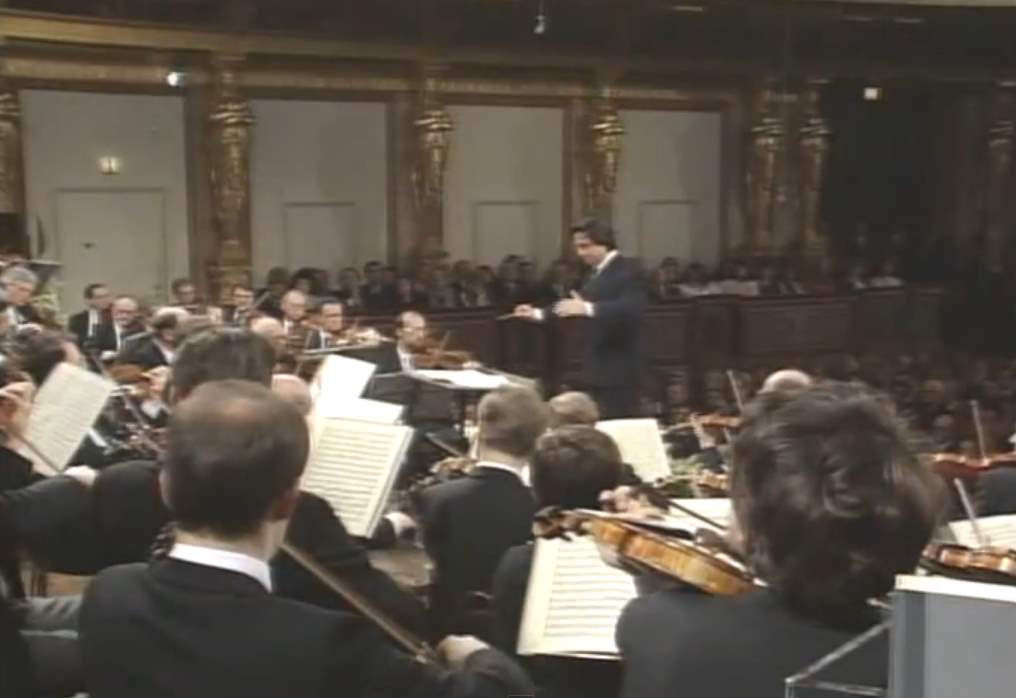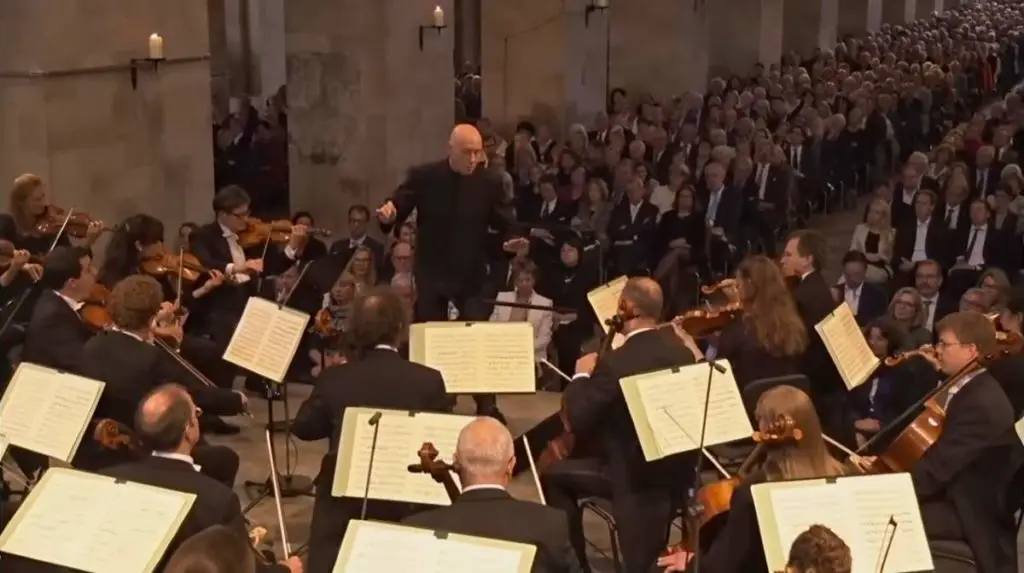Conducted by Günter Wand, the NDR Elbphilharmonie Orchestra performs Franz Schubert’s Symphony No. 8 in B minor, D. 759, commonly known as the “Unfinished Symphony”. This iconic performance was recorded during the opening concert of the Schleswig-Holstein Music Festival 2001 at the Concert and Music Hall Lübeck.
Franz Schubert’s Symphony No. 8, the “Unfinished Symphony”
Franz Schubert’s Symphony No. 8 in B minor, commonly known as the “Unfinished Symphony,” is one of the most intriguing and celebrated works in the orchestral repertoire. Composed in 1822, it remains a subject of fascination due to its incomplete status, comprising only two movements instead of the traditional four. Despite this, the symphony’s existing movements are considered masterpieces of musical expression and innovation.
Schubert began working on the symphony when he was 25 years old, and the first two movements were completed by the autumn of 1822. For reasons that remain unclear, Schubert never finished the symphony, leaving behind sketches for a possible third movement. Several theories attempt to explain this, ranging from Schubert’s dissatisfaction with his work to personal and health-related issues. Some scholars suggest that Schubert might have intended to complete it but was diverted by other projects and never returned to it.
The “Unfinished Symphony” was not performed publicly during Schubert’s lifetime. It was only discovered and brought to light many years after his death. The first performance took place in 1865 in Vienna, conducted by Johann Herbeck, who recognized its significance. Since then, the symphony has gained a revered place in the orchestral canon, admired for its lyrical beauty and emotional depth.
Schubert’s orchestration in this symphony is particularly notable for its lush, expressive quality. He employs a wide range of dynamics and instrumental colors to create a deeply atmospheric and dramatic soundscape. The symphony opens with a mysterious and haunting melody in the strings, setting the stage for a work that is both introspective and powerful. The interplay between the instruments and the thematic development showcase Schubert’s compositional genius.
The “Unfinished Symphony” is often viewed as a bridge between the Classical and Romantic eras, embodying the formal structures of the former while exploring the expressive possibilities that would come to define the latter. Its emotional depth and innovative orchestration have inspired countless musicians and composers, making it a timeless piece of the orchestral literature.
Despite its incomplete status, Schubert’s Symphony No. 8 in B minor remains a testament to his extraordinary talent and continues to captivate audiences worldwide. It stands as a poignant reminder of the brilliance of Schubert’s musical vision and the enduring power of his art.
Movements
With start times in the video:
- Allegro moderato 0:03
- Andante con moto 16:21
1. Allegro moderato
The first movement of Franz Schubert’s Symphony No. 8, the “Unfinished Symphony,” is marked Allegro moderato. It is one of the most captivating and mysterious openings in the symphonic repertoire, characterized by its lyrical beauty and emotional depth.
The movement begins with a dark and haunting melody introduced by the cellos and basses, immediately setting a somber and introspective tone. This theme is soon taken up by the violins, creating a sense of tension and foreboding. The woodwinds then join, adding color and texture to the orchestration. Schubert’s use of dynamics is particularly effective here, as he shifts from the quiet, almost whispering introduction to a more forceful and dramatic statement.
As the movement progresses, the second theme is introduced by the clarinet, offering a contrasting mood with its more lyrical and serene character. This theme is warm and flowing, providing a sense of relief from the intensity of the opening. The interplay between the two main themes showcases Schubert’s ability to create a complex and emotionally rich musical narrative.
One of the hallmarks of this movement is Schubert’s masterful orchestration. He employs a wide range of instrumental colors and textures, using the orchestra to its full potential. The strings often carry the main melodic material, while the woodwinds and brass provide harmonic support and counter-melodies. The movement is also notable for its harmonic richness, with Schubert exploring a variety of keys and modulations to maintain interest and emotional depth.
Throughout the movement, there is a sense of unresolved tension, which adds to its compelling nature. The development section further explores the thematic material, with Schubert skillfully manipulating the motifs and creating intricate interactions between the different sections of the orchestra. The recapitulation brings back the main themes, but with subtle variations that add to the overall sense of development and progression.
The movement concludes with a coda that revisits the opening theme, bringing the music full circle. However, the ending is somewhat ambiguous, reflecting the overall unfinished nature of the symphony. This first movement is a testament to Schubert’s genius, combining lyrical beauty, emotional depth, and structural innovation in a way that continues to captivate listeners.
2. Andante con moto
The second movement, marked Andante con moto, contrasts sharply with the dramatic and brooding first movement. This movement is characterized by its lyrical beauty and serene atmosphere, providing a moment of reflective calm within the symphony.
The movement opens with a gentle and flowing theme introduced by the strings, creating a warm and pastoral mood. This theme is then taken up by the woodwinds, with the clarinet and oboe adding a delicate and graceful touch. The melody is simple yet profoundly expressive, showcasing Schubert’s gift for creating memorable and emotive themes. The orchestration is light and transparent, allowing the lyrical quality of the music to shine through.
As the movement unfolds, Schubert introduces a contrasting middle section that is more animated and rhythmically dynamic. This section features a series of dialogues between the different sections of the orchestra, with the strings and woodwinds engaging in playful and spirited exchanges. The dynamic shifts and rhythmic vitality of this section provide a sense of contrast and development, adding depth to the overall structure of the movement.
One of the notable aspects of the second movement is Schubert’s use of harmonic progression and modulation. He frequently shifts between major and minor keys, creating a rich and varied harmonic landscape. These harmonic shifts add emotional complexity to the music, enhancing its expressive power.
The movement concludes by returning to the serene and lyrical theme of the opening. The final passages are marked by a sense of tranquility and resolution, bringing the movement to a gentle and contemplative close. This conclusion reinforces the overall mood of the movement, leaving the listener with a sense of peaceful introspection.
Sources and Further Readings
- Symphony No. 8 (Schubert) on Wikipedia
- Symphony No. 8, D. 759 (Schubert, Franz) on the International Music Score Library website
- Franz Schubert: Symphony No. 8 in B minor (‘Unfinished’) on the Classic FM website
- Franz Schubert: Symphony No. 8, “Unfinished” on the L.A. Phil website
- “The mystery of Schubert’s ‘Unfinished’ Symphony” on the Chicago Symphony’s official website
![Schubert: Symphony No. 8 - the Unfinished Symphony [Iván Fischer, Budapest Festival Orchestra]](https://cdn-0.andantemoderato.com/wp-content/uploads/2023/12/Ivan-Fischer-Schubert-Symphony-No-8-Unfinished-Symphony-1024x576.jpg)

